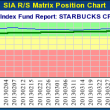Fantasy versus Factors
by Michael Nairne, Tacita Capital Inc.
A casual observer of the investment management industry could easily surmise that active investment managers effortlessly generate “alpha” – risk-adjusted returns in excess of an appropriate market benchmark. After all, year in and year out, advertisements, marketing presentations and sales pitches highlight the “outperformance” of various managers. And year in and year out, many investors chase this “outperformance” to their detriment.
Why is the hunt for alpha such a fruitless quest? The reason is simple - in aggregate, “alpha” does not exist. As Nobel Prize winning economist William Sharpe articulated over two decades ago1, the returns earned by all market participants simply comprise the total market return and hence, one manager’s “outperformance” must be another participant’s “underperformance”. A litany of studies2 has found that active investment managers as a group underperform the market by approximately their costs. Further, manager “outperformance” is not persistent – it’s a coin toss whether today’s “outperforming” manager will be tomorrow’s winner.
Leading financial academics and practitioners have identified strategies that have delivered excess returns that do not rely on the fantastical quest for “alpha”. They have discovered that the stocks of firms that share certain fundamental characteristics called “factors” have expected returns that vary from the overall market. For instance, measured over long periods of time, stocks of small companies have earned higher average returns than stocks of large companies. Value stocks – those low-priced in relation to earnings, dividends, cash flow or book value – have exhibited higher average returns than growth stocks which are often richly priced in relation to these fundamentals. Stocks also exhibit a “momentum” factor: stocks that have done relatively well over the past 3 to 12 months tend to continue to do so while stocks that have done relatively poorly tend to continue underperforming.
Over the past several years, academic research3 has identified another factor that explains the difference in average returns experienced by stocks. High quality stocks that exhibit superior profitability have had higher average returns than low quality stocks. Profits tend to be persistent over time and hence, certain measures of profitability scaled to a company’s assets or book value have been shown to identify stocks of companies that, on average, have higher expected returns.
Factor-based strategies that replicate indices comprised of stocks that share these fundamental characteristics have outperformed the broad market over longer time frames. As evidenced in the following graph, from 1982 through 2012, $1.00 invested in any of the five “factor-based” portfolios – small cap, momentum, value, small cap value (which combines the small company and value factors) or high quality4 – outgrew the overall US market.

There are two primary explanations for the higher expected returns associated with factor-based strategies that target specific dimensions of the market. One is that the higher returns represent risk premiums; compensation to investors for incremental risks that aren’t necessarily evident in recent return histories. For example, value stocks which tend to include a higher proportion of financial stocks and heavily indebted companies dramatically underperformed the overall market during the Depression era of the 1930’s. In the same vein, small cap stocks are not only more volatile but are also much less liquid than large cap stocks.
The second explanation comes from behavioral finance. Cognitive biases such as “overconfidence” and “loss aversion” and social phenomenon such as the “band wagon effect” distort investor decision-making and lead to the mispricing of certain securities. For example, growth stocks during the “tech mania” were bid up to unrealistic prices while languishing value stocks became underpriced and subsequently outperformed in the subsequent decade. High quality stocks, which often underperform during the strong rallies that occur after bear markets, are episodically abandoned for surging lower quality stocks.
The elemental nature of these causes explains why a host of studies has found the performance of these factors to be robust and pervasive across different geographic markets and time periods. In illustration, a recent study5 identified that the value premium was evidenced in average stock returns in North America, Europe, Asia Pacific and Japan. Except for Japan, return momentum was found everywhere. Another study6 encompassing 26,000 individual stocks from 49 countries from 1981 to 2003 found that in addition to normal market risk, momentum and value factors reliably explain the average returns of both country and global industry portfolios. A recent study 7covering about 87% of the global stock market capitalization from June 1998 to June 2012 found that stocks of firms with high earnings quality, on average, outperformed stocks of companies with low earnings quality.
No one can guarantee that the return premiums originating from these dimensions of the market will persist in the future. However, the enduring nature of the underlying causes - cognitive biases hardwired into the human psyche, the impact of social influences and incremental risk – suggests that higher expected returns should be available from these factor-based strategies.
There is another reason to believe that these strategies offer the prospect of future return premiums for patient, long-term investors. These premiums are very volatile and can disappear or go negative for many years. The chart on the following page highlights the percentage of 36-month rolling periods where the factor-based portfolios – high quality, momentum, small cap, small cap value and value – underperformed the broad market.

To many investors, three years of under-performance is almost an eternity. Yet, these factor portfolios underperformed the broad market anywhere from almost 15% to over 50% of the 36-month periods from 1982 to 2012. If one were to include the higher transaction costs of the factor-based portfolios due to their higher turnover, the incidence of underperformance would be more frequent. One of the reasons that these premiums will likely persist is that many investors are simply not patient enough to stay invested to earn them.
Investors who wish to earn market-beating returns have a choice. They can indulge in the fantastical quest for “alpha” via high-cost active managers or they can construct factor tilts in their equity allocations via low-cost exchange traded or enhanced index funds. It doesn’t take a PHD in mathematics to determine which route is more likely to take an investor to higher performance.
July 10, 2013
APPENDIX
TABLE I


Tacita research has been prepared without regard to the individual financial circumstances and objectives of persons who receive it and is not intended to replace individually tailored investment advice. The asset classes/securities/instruments/strategies discussed may not be suitable for all investors and certain investors may not be eligible to purchase or participate in some or all of them. The appropriateness of a particular investment or strategy will depend on an investor's individual circumstances and objectives. Tacita recommends that investors independently evaluate particular investments and strategies, and encourages investors to seek the advice of a financial advisor.
Tacita research is prepared for informational purposes. Neither the information nor any opinion expressed constitutes a solicitation by Tacita for the purchase or sale of any securities or financial products. This research is not intended to provide tax, legal, or accounting advice and readers are advised to seek out qualified professionals that provide advice on these issues for their individual circumstances.
Tacita research is based on public information. Tacita makes every effort to use reliable, comprehensive information, but we make no representation that it is accurate or complete. We have no obligation to inform any parties when opinions, estimates or information in Tacita research changes.
All investments involve risk including loss of principal. The value of and income from investments may vary because of changes in interest rates or foreign exchange rates, securities prices or market indexes, operational or financial conditions of companies or other factors. There may be time limitations on the exercise of options or other rights in securities transactions. Past performance is not necessarily a guide to future performance. Estimates of future performance are based on assumptions that may not be realized. Management fees and expenses are associated with investing.
1 Sharpe, William F, 1991, “The arithmetic of active management”. Financial Analysts Journal, vol. 47, No. 1, January/February 1991. pp. 7-9.
2 Allen, D., T. Brailsford, R. Bird, and R. Faff. 2003. A review of the research on the past performance of managed funds. ASIC REP 22, Australian Securities and Investment Commission.
3 Fama, Eugene F. and French, Kenneth R., “Profitablity, investment and average returns”. Journal of Financial Economics 82, No.3 (2006):491-518 and Novy-Marx, Robert, “The other side of value: the gross profitability premium”. Journal of Financial Economics, April 2013, Vol. 108, No. 1: 1-28.
4 Indices used are as follows: Total Market – Wilshire 5000; Small Cap – IA SBBI Small Stock; Value – Russell 3000 Value; Small Cap Value – Wilshire US Small Value; and High Quality – MSCI USA Quality. The US Momentum portfolio was constructed by averaging the monthly returns of momentum portfolios 8 -10 selected from the 10 portfolios formed on momentum available from Professor Ken French’s website at http://mba.tuck.dartmouth.edu/pages/faculty/ken.french/data_library.html.
5 Fama, E. F. and K. R. French. “Size, value, and momentum in international stock returns” (June 21, 2011). CRSP Working Paper. Available at SSRN: http://ssrn.com/abstract=1720139
6 Hou, K., Karolyi, G. A. and Kho, B.C., 2011. What factors drive global stock returns? Review of Financial Studies 24, 2527-2574.
7 Kozlov, M. and Petajisto, A., Global Return Premiums on Earnings Quality, Value, and Size (January 7, 2013). Available at SSRN: http://ssrn.com/abstract=2179247 or http://dx.doi.org/10.2139/ssrn.2179247










